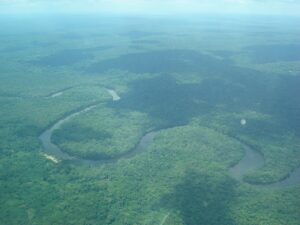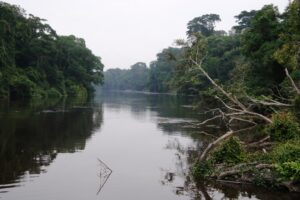Tropical forests are places with abundant rainfall and constant temperatures throughout the year, not to mention that their plants and trees are characterized by large leaves, which have the function of capturing as much light as possible. In fact, only two forests of this type stand out for their large size, the Amazon, considered the largest in the world, and the Congo jungle in Africa.
Indeed, the second largest tropical rainforest covers much of the Congo River plains and most of its tributaries, located in the center of the African continent. What few people know is that this forest covers an area of 700,000 square kilometers, reaching the international boundaries of six countries.
This forest is home to a quarter of the tropical forests that still survive on the planet, crossing the international borders of Democratic Republic of Congo, Republic of the Congo, Gabon, Equatorial Guinea, Cameroon, Central African Republic, and Angola.
Like many natural spaces in the world, this forest is also threatened by climate change and other factors that harm its ecosystem. According to experts, the situation of this place is becoming increasingly complex, a result of deforestation, construction, and poaching.
 The Congo jungle is the second largest tropical forest in the world. Photo: Wikipedia.
The Congo jungle is the second largest tropical forest in the world. Photo: Wikipedia.
Other unknown facts about this tropical forest
Just as many are unaware that this African tropical forest is the second largest in the world, they may not know about these little-known facts about the Congo jungle:
- It houses 170 million hectares of dense humid forest.
- The temperature ranges between 21 and 30 degrees.
- It is home to over 10,000 plant species, 1,000 bird species, 700 fish species, and 400 mammal species.
- It receives an average of 1,800 millimeters of annual precipitation.
- It has 116 million hectares divided into open forests, savannas, woodlands, among other types of forest coverages.
 The Congo jungle covers 700,000 square kilometers. Photo: Wikipedia.
The Congo jungle covers 700,000 square kilometers. Photo: Wikipedia.
The benefits of these forests
Experts affirm that these forests offer many benefits such as regulating the water cycle and climate, as they produce oxygen while absorbing carbon dioxide, controlling floods, promoting biodiversity conservation, providing food, and preventing erosion.
These functions are what give them great importance, as they balance the ecology through various environmental services to society. This is because, in addition to producing oxygen, they allow rainwater to seep into the subsoil and recharge aquifers, keeping soils fertile by producing organic matter.
Do you already know our YouTube channel? Subscribe!

